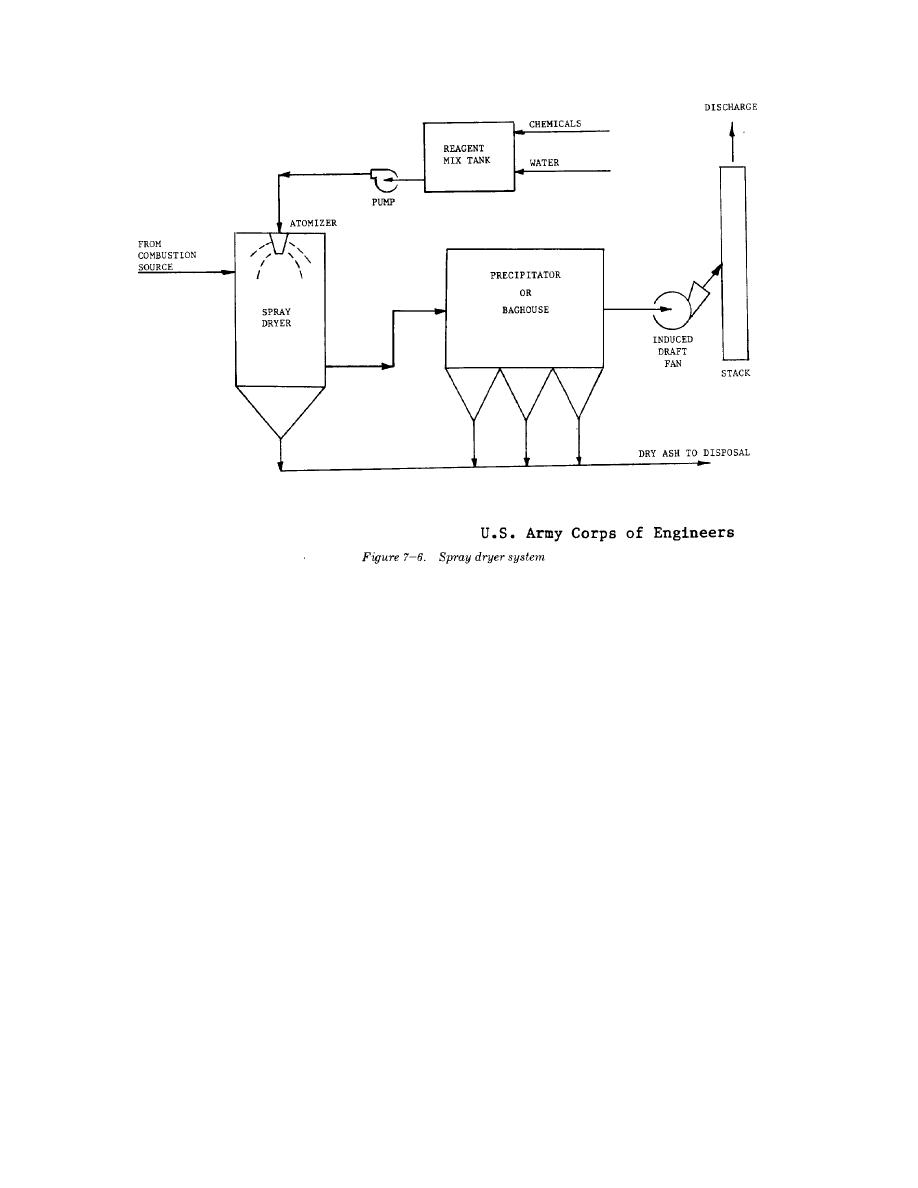
TM 5-815-1/AFR 19-6
7-3.
Application
reactants. Liquid effluent treatment and disposal are
therefore an essential part of every wet scrubber sys-
a. Particulate removal. Scrubbers may be used as
tem. Installation and maintenance of the associated
control devices on incinerators and boilers for fly ash
components can add appreciably to the system capital
collection. The plate, spray, venturi, and moving bed
and operating costs. The degree of treatment required
types have been successfully applied; however, their
will depend upon the methods of disposal or recycle
application has been limited because they require:
and on existing regulations. Required effluent quality,
-- more energy than dry particulate collection
environmental constraints, and availability of disposal
devices of the same collection efficiency,
sites must be established before design of a treatment
-- water supply and recovery system,
facility or the determination of a disposal technique can
-- more extensive solid waste disposal system,
proceed. In many industrial applications the scrubber
-- system to control the scrubbing process in
liquid wastes are combined with other plant wastes for
response to gas flow rate changes.
treatment in a central facility. Design of this waste
b. In making decisions on applicability to a particular
treatment should be by an engineer experienced in
process, figure 7-7 is useful in determining all
industrial waste treatment and disposal.
components which must be taken into consideration.
c. Gaseous removal. Scrubbers have been used pri-
7-5.
Selection of materials
marily for the removal of sulfur oxides in stack gases.
a. General conditions. When choosing construction
(See chapter 10 for a more detailed description of
sulfur oxides (SOx) control techniques.) However, as
materials for scrubber systems, certain pertinent oper-
new control systems are devised, simultaneous removal
ating parameters should be considered. The metal sur-
of gases and particulate material will become the
accepted procedure for designing scrubbers for
behave very differently in the same acid mist environ-
combustion processes.
ment, depending on conditions of carrier gas velocity,
temperature, whether the conditions are reducing or
7-4.
Treatment and disposal of waste
oxidizing, and upon the presence of impurities. For
materials
example, the presence of ferric or cupric iron traces in
acids can dramatically reduce corrosion rates of
Wet scrubber systems are designed to process exhaust
stainless steels and titanium alloys. On the other hand,
streams by transfer of pollutants to some liquid
traces of chloride or fluoride in sulfuric acid can cause
medium, usually water seeded with the appropriate
7-6


 Previous Page
Previous Page
